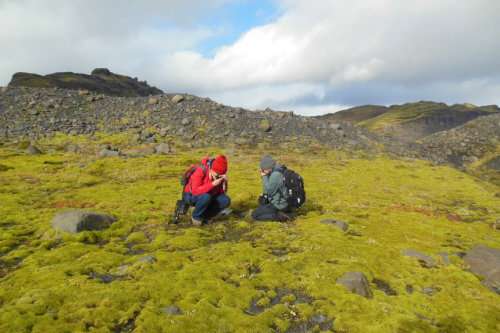Plants are given a new family tree

A new genealogy of plant evolution, led by researchers at the University of Bristol, shows that the first plants to conquer land were a complex species, challenging long-held assumptions about plant evolution.
Earth scientists had assumed that the first plants to become land-based around half a billion years ago were simple structures. This new research indicates that they were already more complex than some of the most primitive of living land plants and have been given a new name – 'Setaphyta'.
Before the first land plants, Earth would have looked unrecognisable with no grass, trees, or even mosses. Mosses, and their relatives the hornworts and liverworts are regarded as the first true plants on dry land. These groups, collectively known as the bryophytes, are small and inconspicuous, damp-loving plants. The simplest of these are liverworts and were believed to be the first on land.
By modelling the molecular sequences of modern plants the researchers have shown that liverworts are more closely related to mosses than hornworts. The liverworts and mosses are now united in a new group, which the team named 'Setaphyta'.
The new family tree of plants with the Setaphyta group shows that liverworts were not the first group to conquer land, and liverwort simplicity reflects the loss of features, not ancestral simplicity.
University of Bristol Earth Sciences Research Associate Dr. Mark Puttick explained: "Land plants are of fundamental importance to the planet and to us. Everything from coal to the food we eat comes from land plants, so it is vital we understand the origin of this group. In order to understand their evolution we need to know how groups are related to one another."
The group used an extensive molecular dataset and sophisticated models for evolution to understand which plant group was the first to conquer the land from their algal ancestry.
Research Associate Dr. Jennifer Morris added: "In order to produce this family tree we analysed a large molecular dataset representative all major groups of land plants and their algal relatives. In none of our analyses do we see liverworts as the earliest group of land plants, so their relative simplicity represents loss rather than the primitive state".
For scientists this change in the family tree is particularly important as modern liverworts were taken to be the exemplar of the first plant species, but this is shown not to be the case.
Overall leaders of the study Professors Philip Donoghue and Harald Schneider said: "Scientists use 'model organisms' to understand the evolution of life. For plants, we typically use modern liverworts as a proxy for the earliest forms and then build on this to understand long-term evolution. As our new tree of plant relationships indicates that the first land plants were more complex than liverworts, we will have to re-evaluate our assumptions on the evolution of land plants.
"Building on this research, our next steps are to reconstruct where the setaphyta grew to help us understand more fully how plants evolved and how they were influenced by changes in climate."
More information: Mark N. Puttick et al. The Interrelationships of Land Plants and the Nature of the Ancestral Embryophyte, Current Biology (2018). DOI: 10.1016/j.cub.2018.01.063
Journal information: Current Biology
Provided by University of Bristol



















